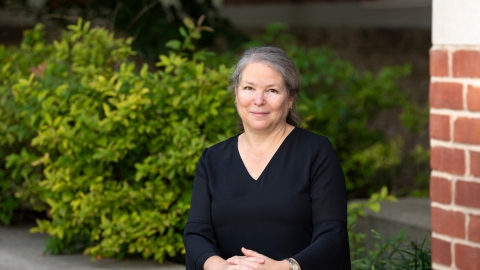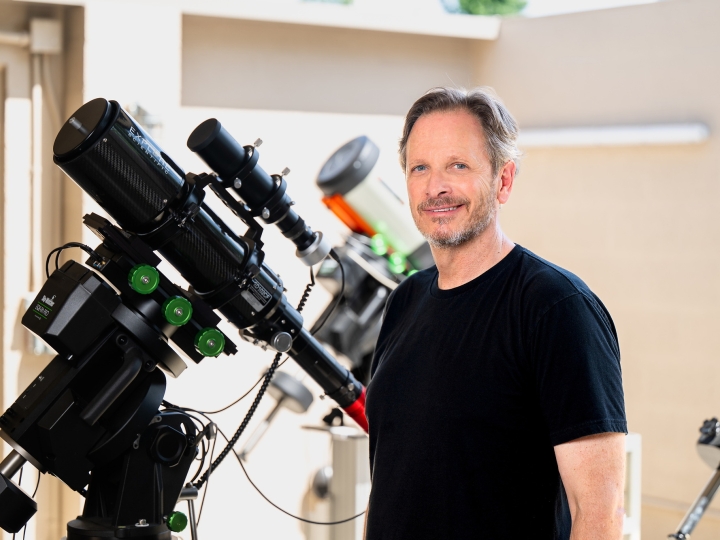
DeeAnn Reeder, Biology
February 28, 2021
Professor DeeAnn Reeder, biology. Photo by Emily Paine, Marketing & Communications
While I don’t think we will find a cure for white-nose syndrome, we will learn more about how it’s killing the bats and why some populations are surviving.
When Professor DeeAnn Reeder, biology, wasn't watching Mutual of Omaha's Wild Kingdom as a child, she was roaming around the Sierra Nevada Mountains in California, observing animals for hours on end. "My folks had a cabin at the base of Desolation Wilderness, so it was a great branching-off point," says Reeder, who has since become a leading bat biologist and expert in white-nose syndrome, a disease that has decimated the brown-bat population in North America since 2006.
Reeder's current research focuses on transcriptomics, an emerging field in disease ecology and endocrinology in which scientists attempt to understand all the genes expressed by an animal.
"We are looking for immunologically or metabolically important genes. While I don't think we will find a cure for white-nose syndrome, we will learn more about how it's killing the bats and why some populations are surviving," she says. "Are the surviving bats resistant to the fungus? We can figure that out studying how their immune response and other aspects of physiology are different from bats that are dying from it. If we have a better understanding of the biology, we may help the surviving populations."
Reeder and her student teams collect tissue and blood samples, purify the ribonucleic acid (RNA) and send the samples to testing facilities. The methods Reeder is developing to understand disease ecology in North American bats will also help her study of biodiversity and disease in South Sudan. Her work on these issues has also led Reeder to advise U.S. and African authorities on other infectious diseases, including Ebola.
Reeder and her students regularly travel to Africa promote conservation, to describe the diversity of mammals and to study factors that influence viral spillover from bats to humans. "We trap a lot of fruit bats, which we know are major disease reservoirs. We want to understand the differences in their immune systems at different times of year and in different climates."

